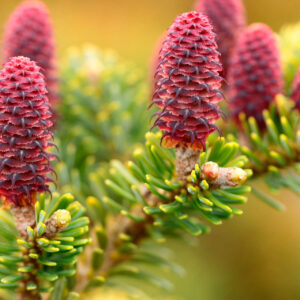Fir trees, members of the Abies genus, have long been celebrated for their grandeur and ecological significance. From the alpine forests of North America to the temperate regions of Europe and Asia, fir trees thrive in diverse environments, offering a glimpse into nature's resilience and beauty.
What Makes Fir Trees Unique?
Fir trees are evergreen conifers, characterized by their straight trunks and pyramidal shapes. Their flat, needle-like leaves are soft to the touch and arranged spirally on the branches. The vibrant green color of the needles often takes on a silvery tint, adding a touch of brilliance to the landscape.
One of the standout features of fir trees is their cones. Unlike the hanging cones of pines and spruces, fir cones grow upright and shatter upon maturity to disperse seeds. This unique trait ensures efficient seed distribution, enabling fir trees to colonize new areas.
Benefits of Fir Trees
Fir trees are more than just visual delights; they offer numerous ecological and practical benefits:
Air Quality Improvement: Fir trees are natural air purifiers, absorbing carbon dioxide and releasing oxygen. They also trap dust and pollutants, contributing to cleaner air.
Erosion Control: The deep roots of fir trees anchor soil effectively, preventing erosion in hilly or mountainous terrains.
Wildlife Habitat: Birds, small mammals, and insects find shelter and sustenance in fir forests. The dense foliage provides protection from predators and harsh weather.
Climate Regulation: By storing carbon, fir trees play a role in mitigating climate change. Their presence in forests helps maintain local temperature and humidity levels.
Fir Trees in History and Culture
Throughout history, fir trees have held cultural and symbolic significance. Ancient civilizations revered them as symbols of endurance and eternal life. In modern times, fir trees are synonymous with Christmas celebrations, their symmetrical forms and lush greenery making them ideal for festive decorations.
The wood of certain fir species is also valued for its strength and workability, used in construction, paper production, and furniture making.
Growing and Caring for Fir Trees
For gardeners and landscapers, fir trees offer a stunning addition to any outdoor space. These trees thrive in cooler climates and prefer acidic, well-drained soils. Planting them in areas with good air circulation minimizes the risk of fungal diseases.
Young fir trees benefit from regular watering to establish their roots, while mature trees require minimal maintenance. Adding a layer of mulch around the base helps retain soil moisture and reduce weeds.
Discover Fir Trees at Conifer Kingdom
Ready to add the timeless charm of fir trees to your garden? Conifer Kingdom provides an exceptional selection of fir varieties, each handpicked for its beauty and adaptability. Explore their collection to find the perfect tree for your landscape.




